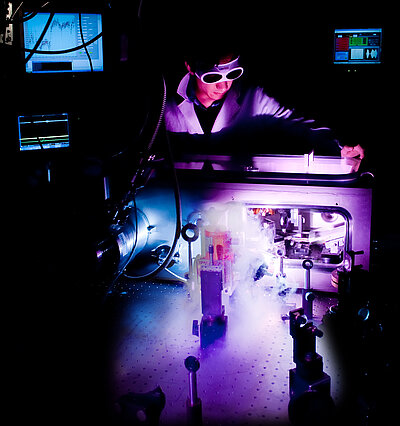Isaac Newton found out in the 17th century that a force causes the acceleration of a body. The inert mass of the body corresponds to the ratio of force to acceleration, i. with the same force a lighter body experiences a greater acceleration than a heavier one. The mass of the body is positive, i. the acceleration takes place in the direction of the force. Charged elementary particles such as the free electron, whose mass is only 10-30 = 0, ... (29 zeros!) ... 1 kilogram, can be accelerated in electric fields to extremely high speeds. The movement of electrons in crystals also follows this law, as long as the electric fields are small. In this regime, the crystal electron has a mass that is only a fraction of the mass of the free electron.
Wilhelm Kühn, Michael Wörner, Klaus Reimann and Thomas Elsässer of the MBI have now shown that crystal electrons in extremely high electric fields show a completely different behavior and their mass even assumes negative values. As reported in the latest issue of Physical Review Letters 104, 146602 (2010), the electron was initially accelerated to 4 million kilometers per hour in an extremely short acceleration phase of only 100 femtoseconds = 0,000,000,000,000 1 second. Thereafter, the electron slows down in a similar period of time and then reverses its direction of movement. This acceleration directed against the force can only be explained by a negative inert mass of the particle.
